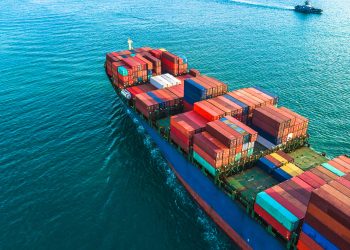Lessons form Marine Accident Reports
The UK MAIB issued this year Safety Digest including lessons learnt from maritime accidents. One incident draws the attention on pilot boat fire where disaster prevented by swift actions.
It was the beginning of another normalnight shift for the two-man crew of a pilotboat. The twin engines in the single engineroom had been recently maintained by thecompany’s regular contractor and the boat wasperforming well. The coxswain and his crewman were relaxed. They had just transferredtwo pilots back onto their pilot boat, andall four were enjoying the fine weather andscenery as they made their way back to theboat’s berth.All was about to change!
The first sign of trouble was when smoke wasseen coming from the engine room’s portand starboard forced exhaust fan ventilationterminals. Although the fire alarm system hadnot sounded, the coxswain reduced enginepower to idle as the crew man and one of thepilots went to the engine room door. Lookingthrough the door’s observation port they sawa fire around the after end of the port mainengine. Having reported their findings to thecoxswain, the Fire Action Plan was immediately put into effect.
The engines were stopped,all fuel supply valves were remotely closed andelectrical power isolated. The engine roomport and starboard forced exhaust ventilationand natural supply ventilation fire flaps wereshut and the engine room’s four pyrogenfixed fire-fighting cylinder activation buttonspressed. At the same time, the coastguardwas informed of the emergency. It was soonafterwards that smoke was seen still comingfrom the starboard forced ventilation terminaldespite the fire flap being apparently closed.
The coxswain then gave instructions for theanchor to be dropped and for the liferaftsto be prepared in case the boat had to beabandoned. Soon afterwards, the RNLI’s localinshore and all weather lifeboats arrived andquickly established boundary cooling aroundthe engine room. The boat was then takenunder tow. The crew and pilots were evacuatedand a lifeboat fire-fighting team transferred tothe pilot boat. Once alongside, the local fireand rescue service attended, confirmed thefire had been extinguished and then ventilatedthe engine room.
Investigations quickly identified the cause ofthe fire to be a loose fuel rail “banjo” bolt fittedto the port main engine – thesebolt connections had been prone to previousleakage. This allowed high pressure, atomisedfuel to spray onto the hot port engine andturbo-charger, which then ignited.This caused extensive wiring damage,including that supplying the fire detectionand suppression systems, and also damageto many of the plastic fittings and deckheadlining.
It was also found that only one of the pyrogenfire suppression cylinders had activatedbecause the electrical cables which triggeredthe system had suffered an open circuit duringthe early stages of the fire. In addition, all ofthe fire detectors were of the smoke detectiontype – there were no flame or heat detectorsfitted.
The engine room ventilation terminals hadbeen modified to incorporate sea spray/misteliminators, which included a fixed fresh waterwashing system. It was found that the washingsystem pipework had worked loose, whichprevented the starboard forced ventilationterminal fire flap from fully closing.
|
Lessons Learnt
|
View relevant cases and also find more cases of maritime accidents by reading UK MAIB- Safety Digest 01/2013






























































